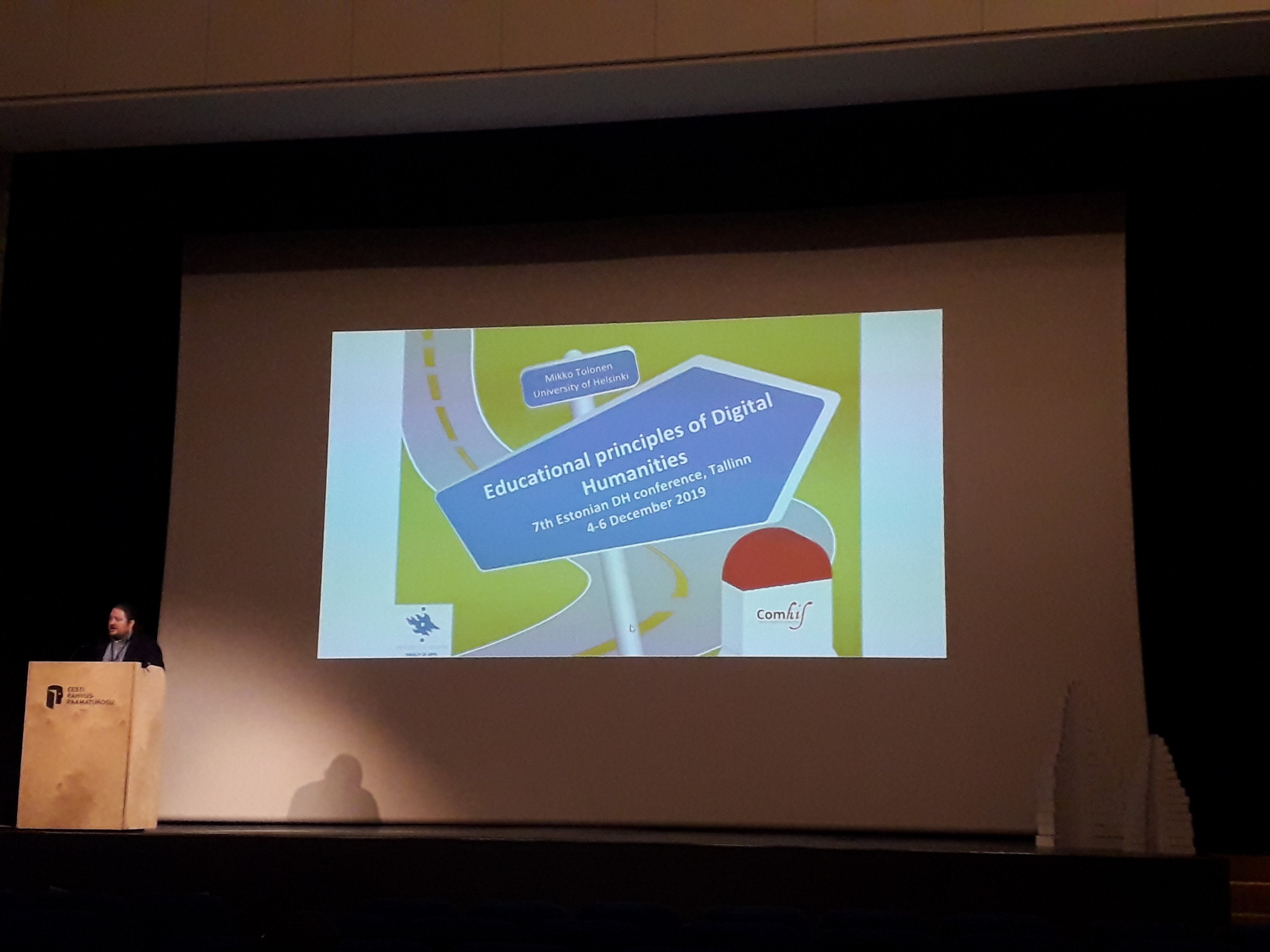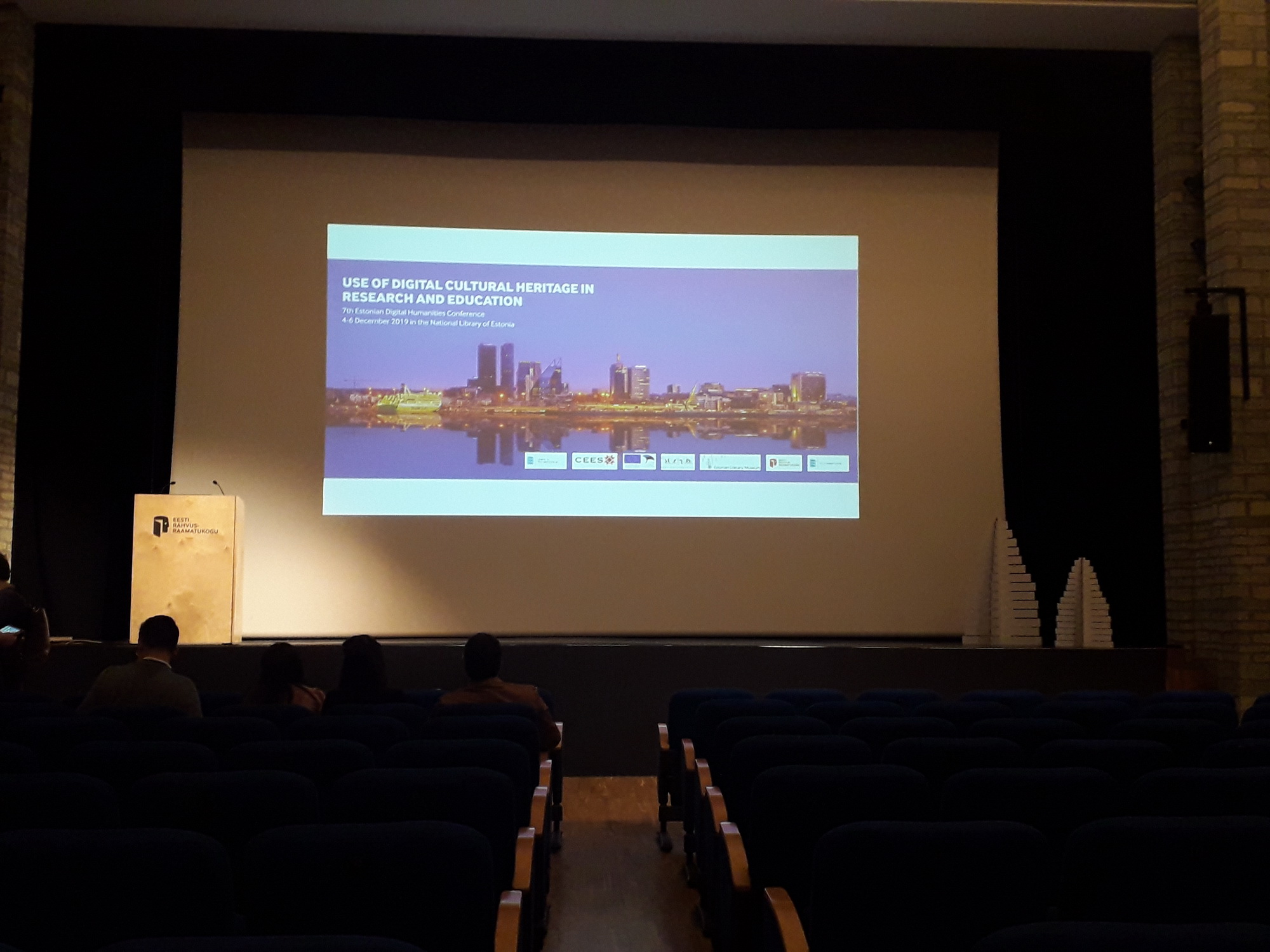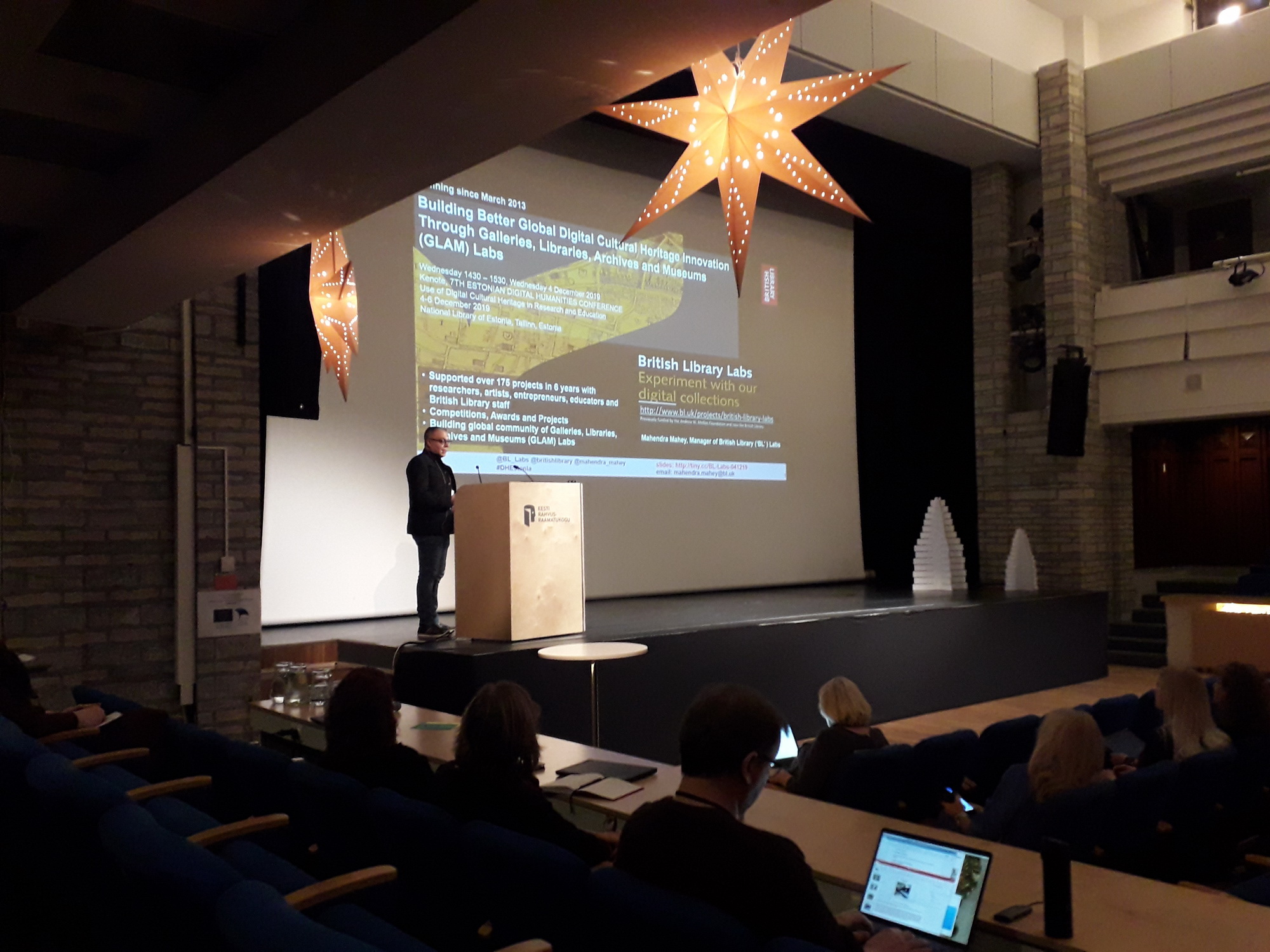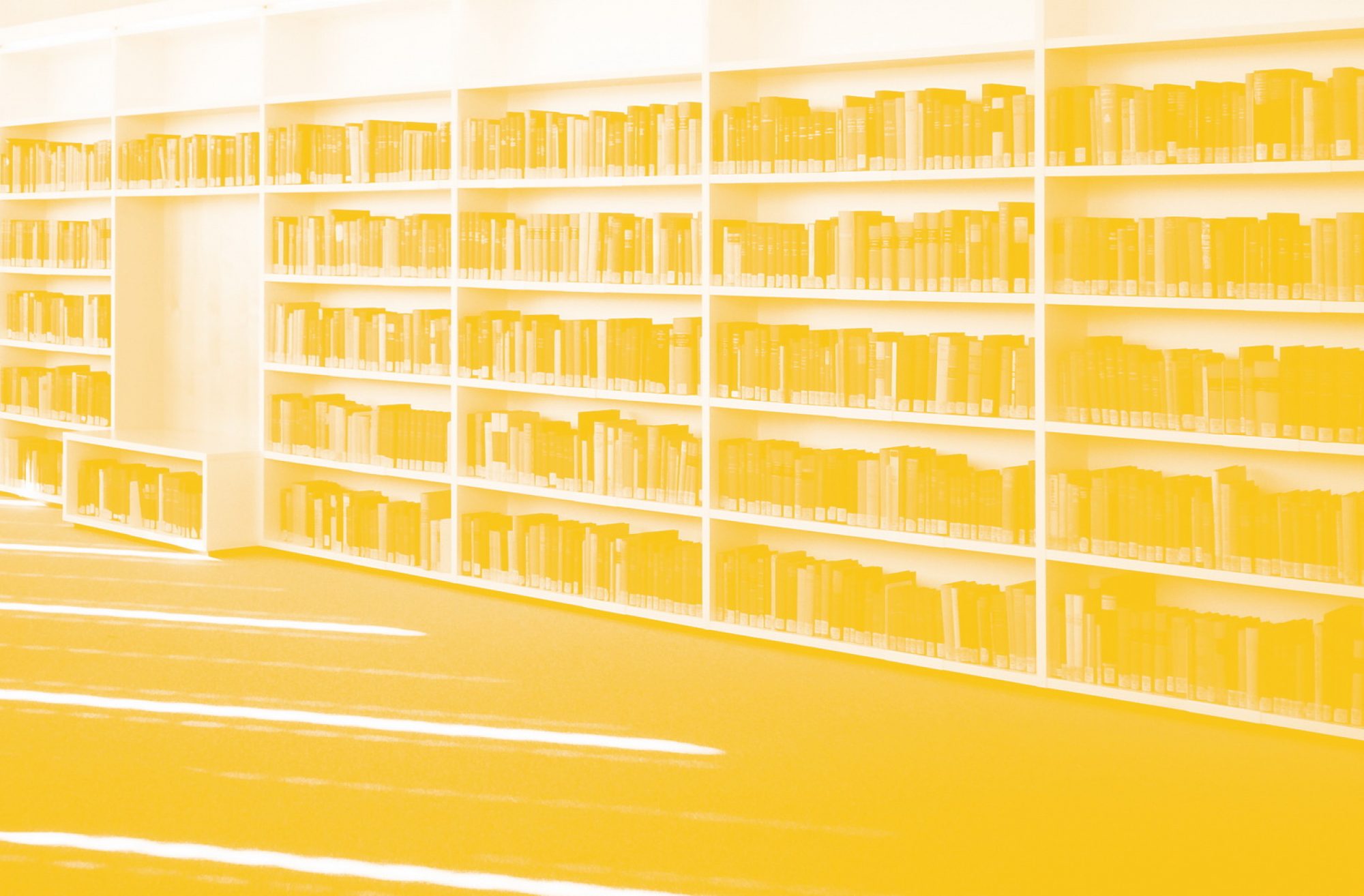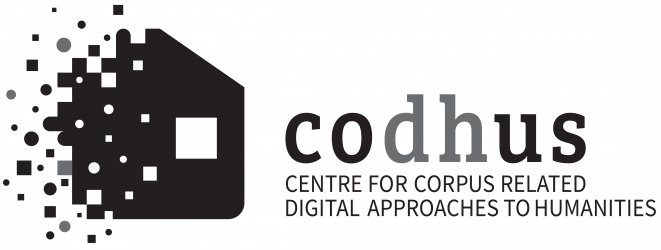4-6 December 2019, The Seventh Digital Humanities Estonia conference, Use of Digital Cultural Heritage in Research and Education, Tallinn, Estonia
Roxana Rogobete participated in the seventh DH Estonia Conference, with the theme Use of Digital Cultural Heritage in Research and Education, in Tallinn, Estonia, on 4-6 December 2019, and presented the paper Digital and Interactive Literature – Transgressing the Borders of Literature?
Abstract
This paper aims to analyse digital literature and its implications for the concept of literature and its methodology of study. Even though this new “digital turn” nowadays brings with it several instruments that help investigating new genres of discourse, researchers may ask themselves if literature expressed in a digital medium does not bring us back to old questions that have already been stated, for example, by the reception theory or by a reader response literary theory.
To begin with, we can understand digital literature in two distinct ways: as literary discourses expressed online or digitally, or as discourses produces by digital instruments. Both of them can bring an enhancement of the reader’s contact with the text through a visual dimension, but this step has already been made by graphic novels, like Persepolis by Marjane Satrapi. What is more is that the way interactive, digital literary texts are built emphasizes a cultural and societal aspect: the 21st century is centered on speech, not on the event, but at the same time conveys the idea of a technology of life, interpersonal relationships, and the virtual that replaces the experience. It is true that the online medium “connects” individuals, but in what ways is it authentic? Here is also the question of the concept of “trust” in the social web, which can eventually reshape social reality.
Furthermore, a digital-born text may be subject to the so-called “distributed authorship”, allowing multiple “narrating voices”. A good example could be Zwirbler (Twister), a novel begun in 2010 by Gergely Teglasy, an Austrian-Hungarian writer. It is interesting because it is an example of user-generated content: it offered the possibility for different users to interfere – to make suggestions, comments on the original text, therefore having the chance to generate plot twists or changes. In this context, interesting is the genetic study of such a text born in the virtual environment, because we are talking about a fluidity of notions that remodel physical maps. And this includes fluctuating “existence” or the emergence/ fluctuating online presence of “authors,” while dissolving the border between the public and the private.
On the other hand, a dynamic, interactive application which incorporates programming languages and functions transforms readers in users and co-creators. Another question arises here: to which extent do then all platforms turn into performative stages where every user can “exercise” his or her “writing talent” or just make a choice from a set of variables already thought by a programme? For example, DNA is an interactive, Web-based novel which allows readers to select his/her narrative path. In this case of machine-created texts, the freedom of the reader to interpret literature is limited.
Therefore, this paper will argue if digital and interactive literature truly transgresses the borders of literature or just re-enacts debates that were already heated in the 20st century.
Snapshot of first slide

Presentation excerpts:
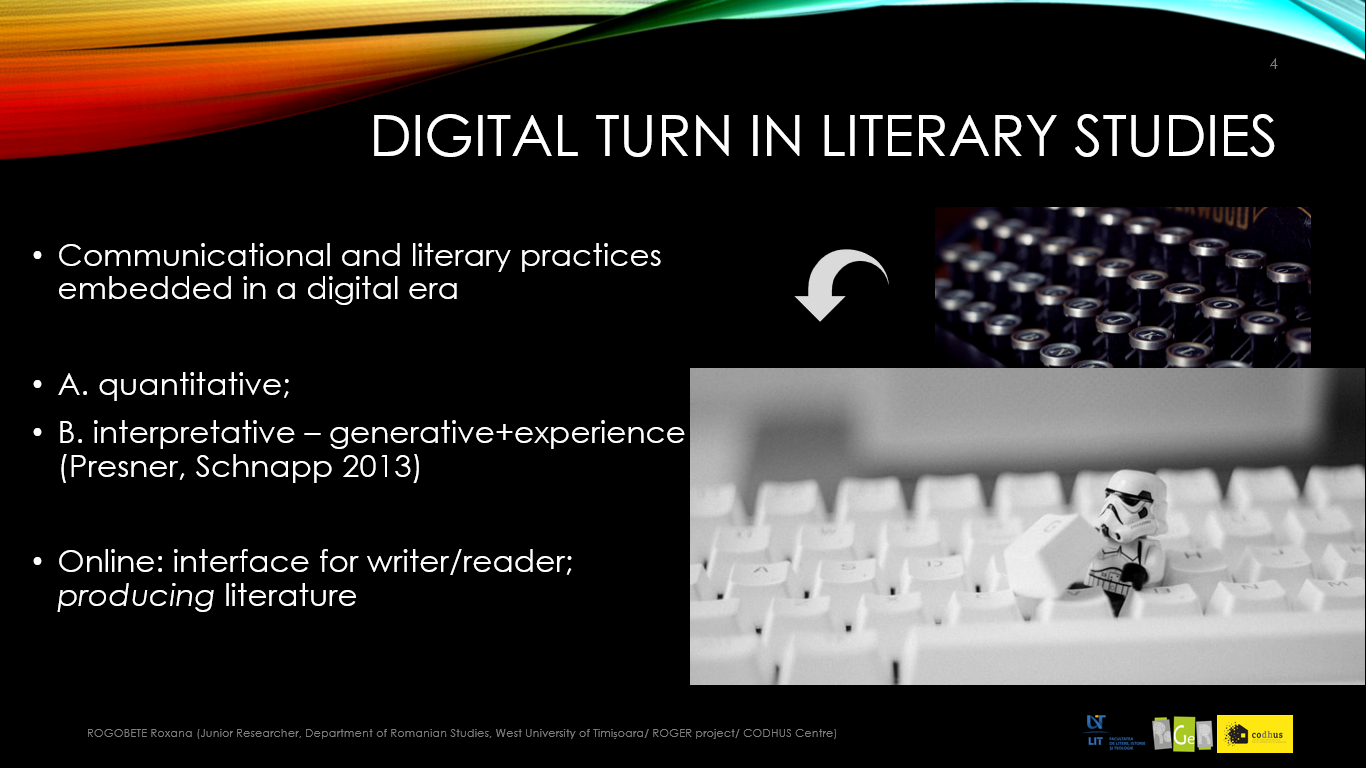
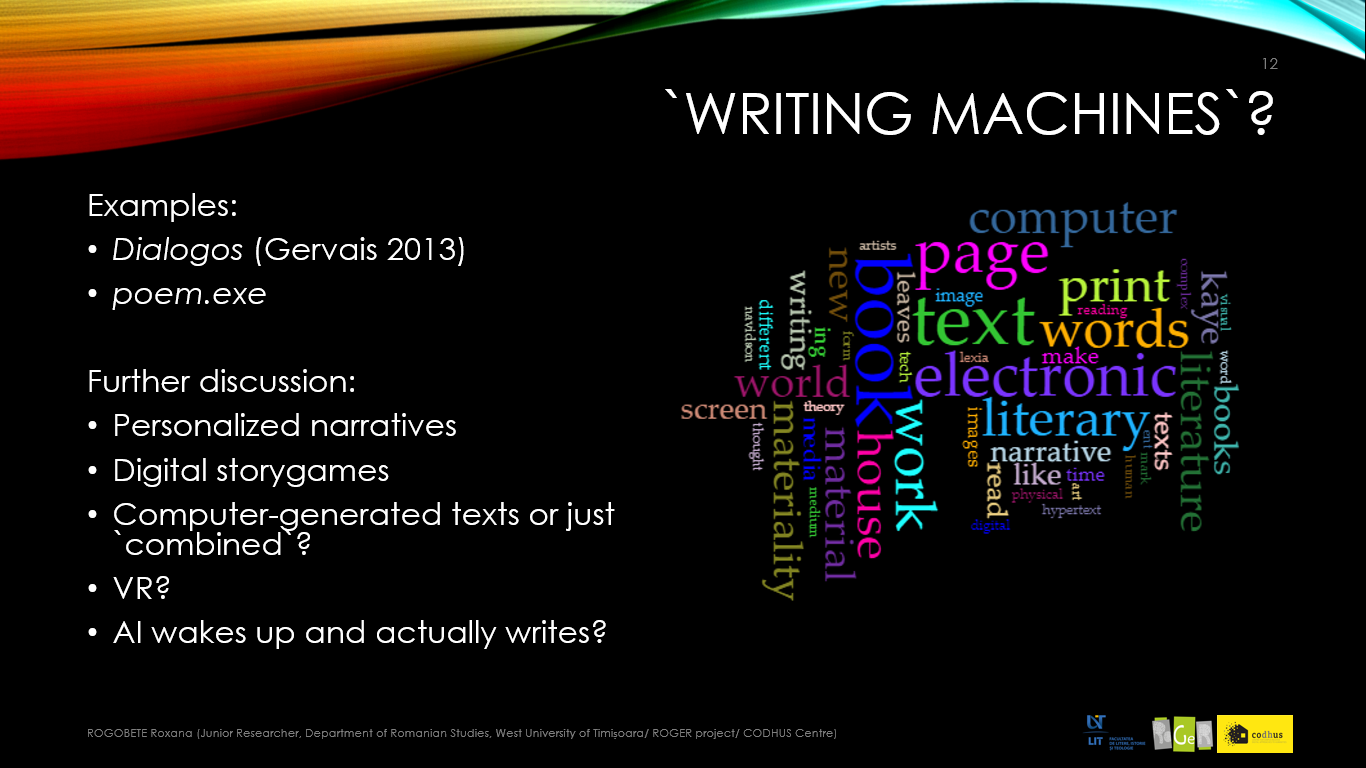
More information about DH Estonia 2019 conference here.
Impressions:
The conference gathered scholars from 22 countries (Estonia, Finland, UK, Germany, USA, Spain, Austria, Qatar, Croatia, Latvia, Romania etc.), having panels focused on literature, linguistics, cultural heritage or digital instruments which can be used in research and education. We were impressed by the extremely well-developed digital infrastructure in Estonia, but also by the keynote speakers’ availability to disseminate information and create contacts and collaborate. From the teaching and educational principles in DH, to examples of researches on archives and digital collections of the British Library Labs, to an analysis of young people’s social media behaviour, the presenters offered consistent insights of their research and interesting methods that one can replicate.
Photos from the conference:
